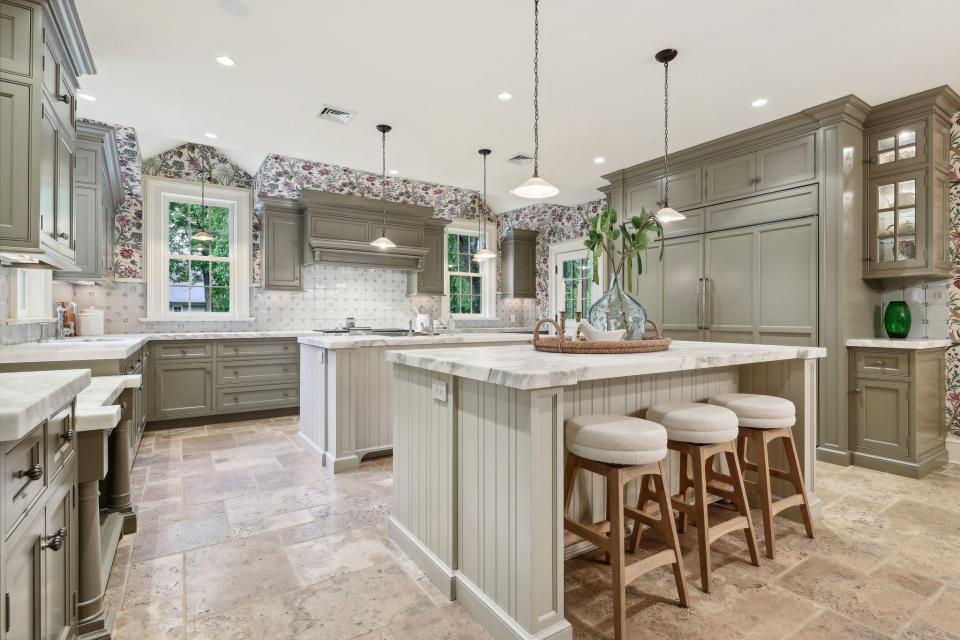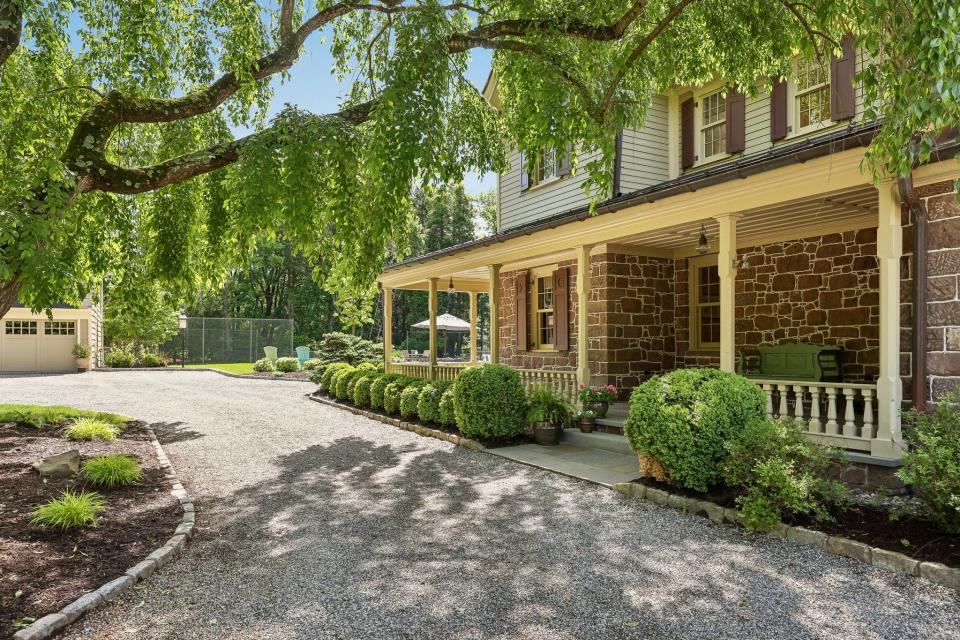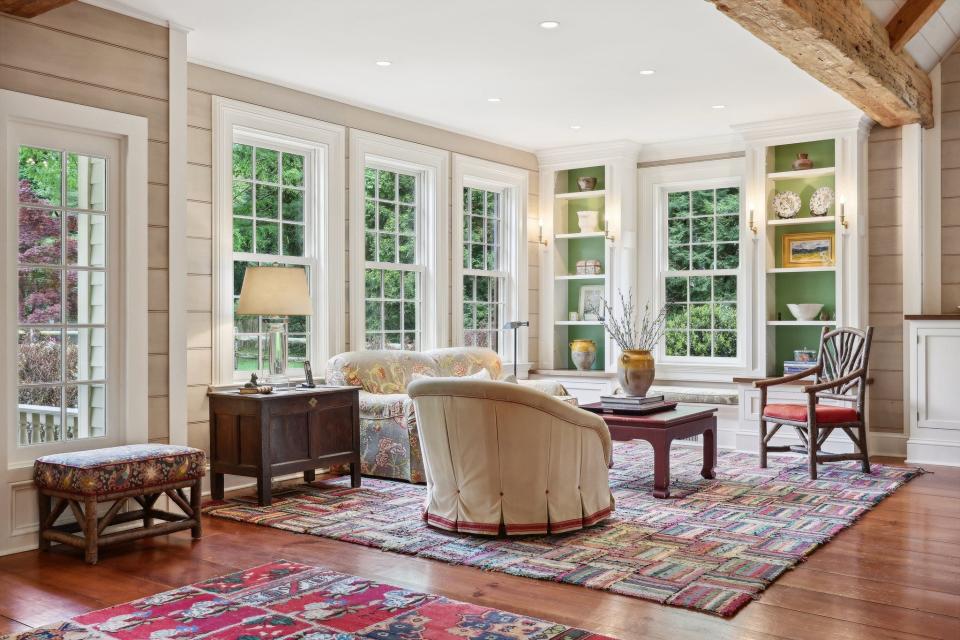One of the most historic homes in Ho-Ho-Kus is on the market for $3.9 million
One of Ho-Ho-Kus' most historic homes, a significantly expanded and renovated Dutch Colonial on East Saddle River Road, has hit the market.
Built with cut brownstone block and dating back to the 18th century, 825 East Saddle River Road is one of just a handful of Ho-Ho-Kus homes listed on the National Register of Historic Places. The Hermitage and the Zabriskie House, better known as the Ho-Ho-Kus Inn & Tavern, are among them.
Called the Terhune-Hopper House of Ho-Ho-Kus — not to be confused with the Terhune-Hopper House in Upper Saddle River — 825 East Saddle River Road is linked to some of the first European settlers in the area.
Ho-Ho-Kus, once dubbed Hoppertown, has the Hopper, Bogert, Ackerman, Oldes and Terhune families among its colonial-era founders.

Listed this month for $3.9 million, the home contains nine bedrooms and eight bathrooms. Its 1.7-acre lot has a tennis court, pool and detached three-car garage. The latter is a converted barn that holds a loft, cabana, entertainment area, kitchenette and laundry room as well as two showers and accompanying changing rooms.
The main home, renovated and expanded in 2008, contains nearly 10,000 square feet of living space. It also has modern climate control and smart home capabilities, said Jill P. McAuliffe, the listing agent with Christie's Int. Real Estate Group and the home's owner.
"We love living here," she said. "It's very comfortable. There's been a lot of owners that have lived here throughout the years and everybody did a little something to modernize it."

The oldest part of the Terhune-Hopper House, visible in the rectangular block with the shuttered window to the right of the front door, was built circa 1790, according to its filing with the National Register of Historic Places. Updated and upgraded over more than two centuries, the home was added to the National Register in 1983 along with more than 200 other "Early Stone Houses of Bergen County" in a thematic listing.
The county's early stone homes are relevant for the regional architectural style associated with Dutch culture, which was given new life in the 20th century as the Dutch Colonial Revival style. Even through its modern additions, the home retains classic Dutch Colonial features: cut sandstone, a gambrel roof and sweeping overhangs above porches.
The stone homes are also significant for their connections to the early Dutch, English and Huguenot settlers who built them. The construction of the original footprint of the Terhune-Hopper House is credited to the Terhune family, and the home spent at least two generations under their ownership, according to the home's nomination form. The Terhune family arrived in Pre-Colonial America from Holland in the 17th century after leaving France to pursue their religious beliefs as Huguenots, according to various Bergen County histories.

Other past owners of 825 East Saddle River Road included Peter D. Westervelt, a Bergen County court justice in the mid-1800s, and Nathanial Orr, one of the original township committeemen in Orvil Township. Created in 1886, Orvil Township was dissolved just 33 years later after being torn apart over its brief history to create Allendale, Saddle River and Upper Saddle River, among other Bergen County towns. Some of it later once again became part of Ho-Ho-Kus.
In the mid-1900s, the Terhune-Hopper House was owned by Cornelius H. Van Vlaanderen. As president of the Van Vlaanderen Machine Company of Paterson, he ran one of the world's largest suppliers of dyeing and other textile machinery in the first half of the 20th century. The company started in 1903 in a one-car garage Van Vlaanderen's father Peter rented for $1 a month, according to an October 1921 report in Success magazine. Its first product was a device used to measure fabric on a loom. By 1921, it had 300 specialty machines and mechanisms in its catalog. Some cost as much as $100,000, Success reported.
That year, Peter Van Vlaanderen estimated roughly 85% of the machinery used to dye, moray and print flowers on silk in the states was made by his company, according to Success. The company helped pull high-quality silk dyeing and manufacturing from Europe into Paterson. However, it could not stop Asian silk manufacturers from ultimately decimating the domestic industry and the company transitioned to making printing presses and graphic‐arts equipment in the second half of the 20th century.
This article originally appeared on NorthJersey.com: One of North Jersey's 'Early Stone Houses' for sale for $3.9 million

